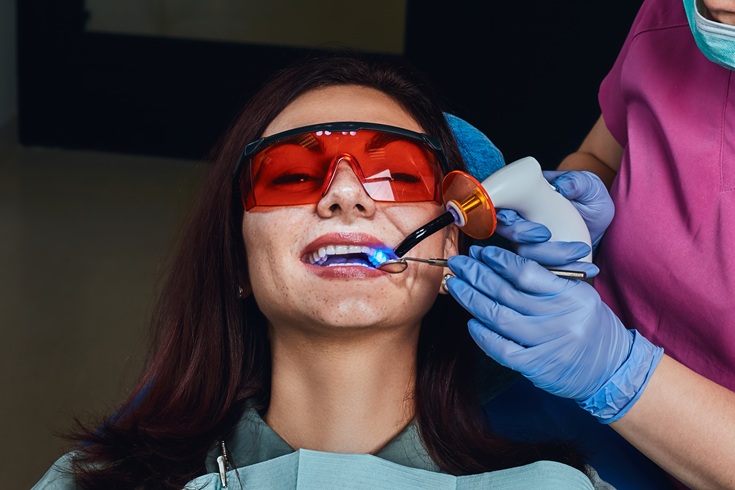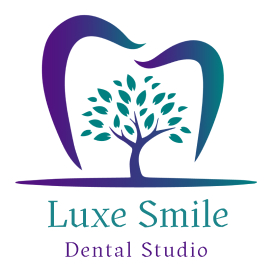How Is Oral Cancer Screening Performed? Step-by-Step


You walk into a dental office for a regular check-up, expecting the usual cleaning and maybe a lecture on flossing. But your dentist brings up something unexpected—an oral cancer screening. It might initially feel surprising, especially if you’ve never had one. But this quick, painless process could be the most important part of your visit.
Oral cancer is not always preceded by obvious warning signs. That’s why it is so important to detect it early. A screening can catch possible problems before they become fatal. The best news? The screening is quick, and it may save your life.
This blog takes you through step-by-step oral cancer screening process with total transparency. You’ll also discover what signs dentists are trained to detect, and how this screening might save your life without you even knowing it.
Let’s begin where it matters most: learning what your dentist is searching for.
Why Does Oral Cancer Screening Matter?
Oral cancer may occur in any area of the mouth, such as the tongue, cheeks, lips, gums, floor of the mouth, and even the throat. The American Cancer Society estimates that more than 54,000 individuals in the United States are diagnosed with oral or oropharyngeal cancer annually.
The catch: Most of these cases at an early stage are painless and asymptomatic. That’s why screenings, particularly those that are carried out during regular dental checkups, are very much responsible for early detection.
A study in the journal Community Dentistry and Oral Epidemiology revealed that oral cancer screening during dental checkups helped enhance the identification of pre-malignant lesions and resulted in better survival rates. The earlier the lesion is detected, the simpler it is to treat.
What Does Oral Cancer Screening Find?
Your dentist is not searching for a diagnosis when they screen for oral cancer. They’re searching for changes. That means any of the following:
- Red or white patches on tissues in the mouth
- Unusual bumps, lumps, or swelling
- Persistent sores in the mouth
- Persistent pain
- Numbness in the tongue or lip
- Trouble swallowing with no known reason
- Hoarseness that persists
Most of these symptoms don’t mean cancer. But some do. That’s why this exam matters—even if nothing feels wrong.
Step-by-Step: How Oral Cancer Screening Is Performed
Dentists are trained to spot subtle issues early. Here’s what typically happens during a routine oral cancer screening:
Step 1: Visual Exam of the Face and Neck
Before even looking inside your mouth, your dentist checks your face, jaw, and neck.
- They’re checking for asymmetry, swelling, or changes in the skin
- They’ll inquire about new pain, changes in your voice, or weight loss
These symptoms may not appear dental initially, but oral cancers can involve more than your gums or tongue.
Step 2: Intraoral Inspection
Then, the dentist proceeds to the inside of your mouth:
- They’ll examine your gums, tongue (top and bottom), cheeks, and roof of your mouth
- A tongue depressor and overhead light make it easier for them to see
- You’ll probably be asked to protrude your tongue, move it from side to side for better inspection
Here, they’re looking for ulcers, color changes, texture alterations, or growths that shouldn’t be there.
Step 3: Palpation (Touch Check)
Next, they’ll press and palpate gently for anything out of the ordinary:
- Fingers check along your jawline, under your chin, and along the sides of your neck
- Within your mouth, they’ll apply gentle pressure on your tongue and cheeks
- They’re checking for firmness, masses, or pain upon touching
Even when nothing can be seen, a hard area beneath the skin may be an early sign.
Step 4: Use of Special Tools (If Necessary)
Dentists in most practices will use upgraded screening tools.
Some of the tools utilized are:
- Velscope or other fluorescence equipment – These emit a blue light in your mouth. Healthy cells bounce back differently from suspicious cells.
- Toluidine blue stain – An innocuous dye that might adhere to precancerous tissue more than healthy tissue.
These instruments assist dentists in determining if an area should be examined more closely.
Step 5: Next Steps If Anything Is Found
If something abnormal is seen during screening, your dentist will probably:
- Take a photo or mark the area for tracking.
- Send you to a specialist for additional testing—usually an oral surgeon or ENT (ear, nose, and throat) specialist.
- Recommend a biopsy to determine if the spot is cancerous, pre-cancerous, or benign.
Don’t panic. Not all abnormal spot is cancer. Many times it’s something benign such as a canker sore or irritation from a dental appliance. But better safe than sorry and get it checked early.
Who should be screened—and how often?
Although anyone can have a screening benefit, some groups are at increased risk:
- Tobacco users (smoked or smokeless)
- Heavy alcohol drinkers
- Individuals with HPV (Human Papillomavirus)
- Family history of oral or head and neck cancer
- People over the age of 40
Most dentists include it as part of your annual dental checkup. But if you are in a high-risk group, they might recommend it more frequently.
Simple, Painless, and Life-Saving
Here’s what’s most important: oral cancer screenings are painless, quick, and usually performed during your routine dental check-up. You don’t have to ask for them separately, and there’s no preparation required.
Yet, many people avoid dental visits and lose the opportunity to catch something serious early. Don’t be one of them. Incorporate screening into your routine.
Prevention Begins with Awareness
Oral cancer screening isn’t frightening—it’s ensuring patient safety. It’s identifying something before it’s ever a threat.
The reality is that most patients who do get screened leave without a worrying report. And for the few who require follow-ups, they’re usually thankful their dental staff detected it early.
Discuss oral cancer screening with your dental care provider in Phoenix. Your dentist is not only there to whiten your smile—they’re your best defense in detecting early warning signs that might save your life.



